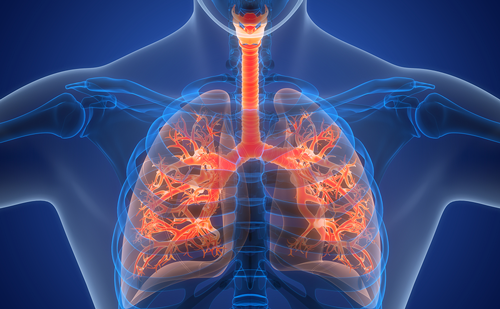For two such highly prevalent disorders, the co-existence of chronic obstructive pulmonary disease (COPD) and obstructive sleep apnoea (OSA) in the same patient gets remarkably little attention in routine clinical practice. Recent estimates indicate that up to 50% of adult males in the general population have sleep-disordered breathing based on an apnoea-hypopnoea frequency (AHI) over five events per hour, although the prevalence of a clinically significant disorder based on associated symptoms is considerably lower.1,2 COPD is also highly prevalent, with population estimates of 10% for COPD associated with significant airflow obstruction.3 Thus, by chance alone, COPD and sleepdisordered breathing can be predicted to occur in about 3–4% of the general adult population, with COPD and a clinically significant OSA syndrome occurring in 1–2%.4 In considering the relationships between COPD and OSAS, several questions can be considered. For example, does the presence of either COPD or OSA increase the likelihood of the other disorder in an individual patient? Does the presence of both disorders together, termed ‘overlap syndrome’, increase the likelihood of co-morbidities? And what are the implications of overlap syndrome for patient management and prognosis?
Regarding COPD predisposing to OSA, one has to consider the influence of different COPD phenotypes. In particular, the emphysema phenotype that is typically associated with lung hyperinflation and low body mass index (BMI) is likely to be protective against OSA,5,6 whereas the chronic bronchitis phenotype that is associated with chronic productive cough, higher BMI, and predisposition to cor pulmonale is more likely to predispose towards OSA.7 Recent evidence indicates that lung hyperinflation is associated with reduced pharyngeal collapsibility,5 and AHI is negatively correlated with the degree of emphysema on computed tomography (CT) of the thorax in COPD patients.6 Peripheral oedema in patients with cor pulmonale predisposes to OSA as a result of rostral fluid shift during the night associated with the supine position, contributing to narrowing of the oropharynx by fluid build-up.8 The evidence that OSA contributes to COPD is less clear, although there is some epidemiological evidence that both COPD and asthma are more prevalent in patients with OSA, but the mechanisms of this association have not been established.9
Concerning co-morbidities, COPD and OSA are both recognised as independent risk factors for cardiovascular co-morbidity,10,11 and it appears reasonable to postulate that patients with overlap syndrome will be at greater risk of co-morbidity. However, there have been remarkably few reports in the literature regarding the risk of cardiovascular disease in patients with overlap syndrome. Overlap patients demonstrate more pronounced hypoxaemia during sleep than patients with either COPD or OSA alone and therefore they are more prone to develop pulmonary hypertension.12 Both COPD and OSA alone are associated with evidence of systemic inflammation,13,14 which is postulated as an important mechanism in the development of cardiovascular and metabolic disease. However, there have been very few studies that have assessed measures of systemic inflammation or other basic mechanisms that may contribute to cardiometabolic disease in patients with overlap syndrome.
The diagnosis of OSA requires a combination of clinical assessment and overnight sleep studies,15 which represents a more complex assessment than required for the diagnosis of COPD. Thus, clinical awareness is important in the recognition of possible OSA in COPD patients and screening questionnaires may assist in this regard.16 Furthermore, since overlap patients are more likely to be hypoxaemic and hypercapnic, particularly during sleep, related clinical features such as morning headache and peripheral oedema as a result of cor pulmonale are likely to be more prevalent in patients with the overlap syndrome. Diagnostic sleep studies in patients with suspected OSA increasingly rely on limited cardiorespiratory measurements, frequently performed in the patient’s home, which represents a more cost-effective approach to the diagnosis than the traditional approach of full polysomnography (PSG) in the sleep laboratory.17 However, since sleep quality is generally poor in patients with COPD,18 PSG studies may be preferable in selected patients, particularly those reporting poor sleep quality. However, where resources are limited, overnight oximetry may be sufficient in many patients, particularly using an oximeter that provides a printed reading that allows identification of the typical transient dips in oxygen desaturation that characterise obstructive apnoea.
The recognition of OSA in COPD patients has important clinical relevance, as the management of overlap syndrome is significantly different than COPD alone, particularly in the use of non-invasive pressure support during sleep, usually in the form of continuous positive airway pressure (CPAP). Furthermore, recent evidence indicates that patients with overlap syndrome treated with CPAP have significantly improved survival compared to those not treated with CPAP,19 which indicates that failure to recognise co-existing OSAS in patients with COPD is likely to result in worse survival. Thus, many questions remain open regarding the epidemiology, clinical consequences and outcomes of patients with overlap syndrome, and this topic remains an important and clinically relevant subject for future research.













